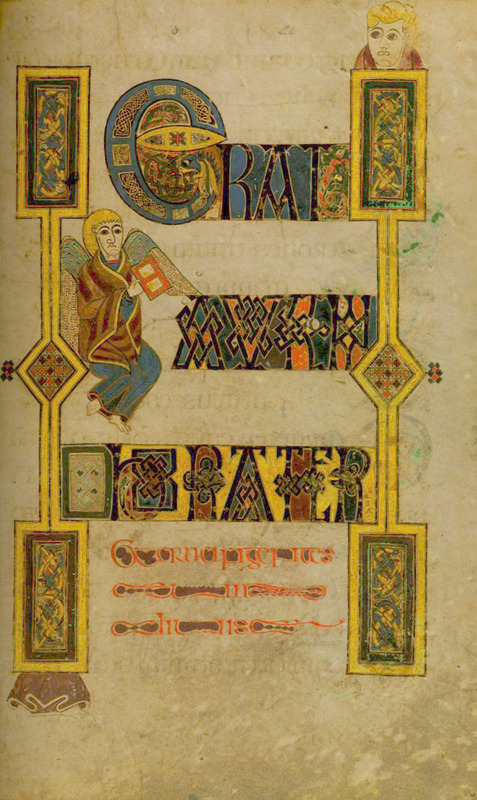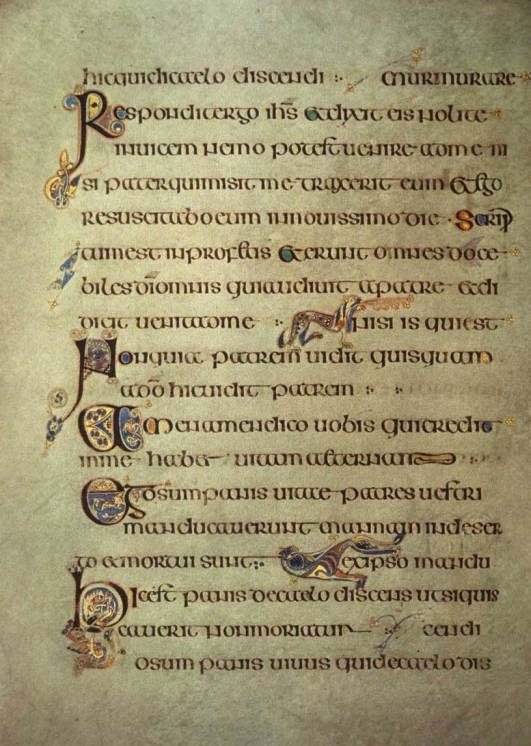The Book of Kells
The Book of Kells.
Luzerne: Faksimile Verlag, 1990.
Call Number: (RARE) ND 3359 .K4 B65 1990
Special Collections, Golda Meir Library
An extraordinary early manuscript, the Book of Kells has been called "the most beautiful book in the world." Dating to the eighth or ninth century, the manuscript remains a marvel of intricacy and creativity. Created in the scriptorium of the monastery of the Collum Cillae order, the book was named for its home, Kells in County Meath near Dublin. Christianity, as a religion of the book, required that Bibles be broadly available, and the large land revenues of the monastic orders maintained large scriptoria. Few Bibles survived the period; and large illuminated Bibles such as the Book of Kells are exceptional.
Work in the Irish monastery's scriptorium was an arduous, but meditative and highly esteemed labor of faith and devotion. The scribes worked through the daylight hours in the scriptorium in absolute silence, communicating their material needs in signs to an officer armarius. Each scribe worked with quill or reed pens and iron-gall ink on a folded section of vellum. Their Irish majuscule script demonstrates a sense of sublime balance and beauty; the finished capital initials are works of elaborate abstractions. When a quaternion was finished, it was sent to be illuminated. The Kells illuminations are distinctive, intricate, and mathematically precise. Eighth-century illumination usually depicts scenes from the life of Christ, however the Kells illuminators were exuberantly creative, drawing from the rich context of Irish religious imagery and Celtic artistic tradition. The mystical abstraction and high level of detail offered absorbing meditation for the artists and scribes. The craftsmanship shown in the Book of Kells is a distinctive treatment of sacred text, and the tandem work of scribes and artists in the scriptoria established a permanent place in the iconography of the Bible.
The book remained at Kells throughout the Middle Ages; venerated as a relic it survived Viking plunderings, arsons, and regicides, although it was lost and recovered, and stripped of its ornamented treasure binding by thieves in 1007. Today the Book of Kells resides at the Library of the Trinity College of Dublin.
This facsimile of the Book of Kells is the most recent and most faithful reproduction of the manuscript. The facsimile was produced using state-of-the art reproduction technology, and has been critically acclaimed for its closeness to the original. Limited to an edition of 1,480, the facsimile forms part of Special Collections' extensive holdings of accurate, high-quality reproductions of unique medieval and early renaissance manuscripts.


